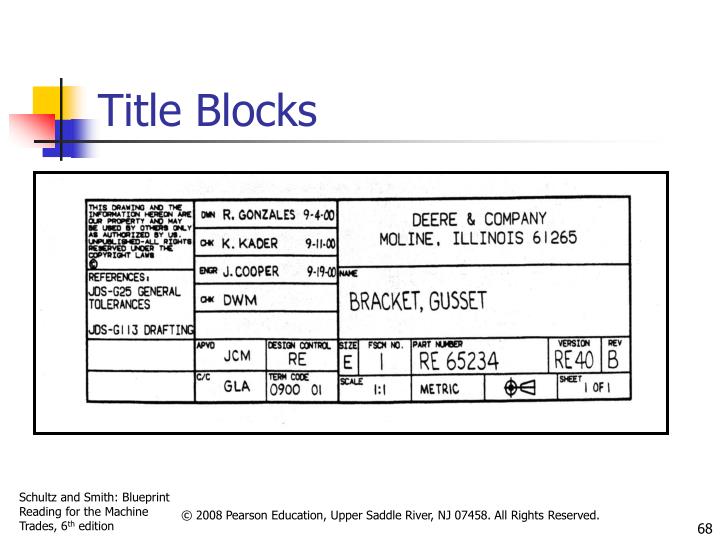

- #Blueprint title block with material list for size a software
- #Blueprint title block with material list for size a iso
Threaded Inserts - Cleaning and Installation Notes TIGHTENING TORQUE OF THREADED FASTENERS SHOULD BE AS LISTED IN TORQUE TABLE. Testing and Inspection Notes RADIOGRAPHIC INSPECTION OF ALL WELDS IN ACCORDANCE WITH standard-XXX. Surface Preparation Notes SURFACE TO BE CLEANED AND POLISHED FOR VACUUM USE. Plating and Coating NotesCADMIUM PLATE IN ACCORDANCE WITH standardXXX. Joining Method Notes (welding, brazing, etc.)FUSION WELD IN ACCORDANCE WITH standard-XXX. Heat Treating NotesHEAT TREAT IN ACCORDANCE WITH standard-XXX TO XXX-hardness. Dimension Notes ALL DIMENSIONS APPLY AFTER SURFACE TREATMENT. Some examples of the notes used in working drawings are as follows: Notes are usually placed in the lower left corner of the drawing sheet and they are numbered consecutively downward. Information other than pictorial views and dimensions necessary for completing a drawing is classified as “notes”. Zoning is usually used for large size drawing sheets where it allows easy references to various parts of the drawing by referencing a coordinate such as B4. When zoning is used it is located inside the drawing frame. When the parts list is very large a separate drawing sheet may be used for the parts list alone.Ī drawing may be divided up into a grid using letters and numbers. the drawing number of each individual part. The bill of materials should give the following information: The bill of materials is usually placed at the bottom right of the drawing frame, just above Material or Parts List (Bill of Materials),If the drawing contains a number of parts, or if it is an assembly drawing, a tabulated parts list is added to the drawing. All modifications to the drawing should be documented there. the units of the dimensions (if the drawing is mistakenly printed on a different paper size, the scale becomes meaningless)Ī revision table is normally located in the upper right of the drawing frame. the name of the source part or assembly file. #Blueprint title block with material list for size a software
the name of the CAD software used and its version.In addition to the information above, for drawings produced using CAD software, it is highly recommended to have the following information in the title block: other information as required (tolerances, surface finish, etc.).the sheet number for multi-sheet drawings.the signature or initials of the draftsman, checker, approving officer, and issuing officer, with the respective dates.the angle of projection used, either first or third, generally shown symbolically.the drawing number, which is generally a unique filing identifier.


the name of the company or organization.Title Block, The title block is normally placed in the bottom right of the drawing frame, and it should contain the following information: The margins of the drawing frames are standardized for each size of paper.Sheet FramesIt is standard practice for a drawing frame to be printed on each sheet, defining a margin around the outside of drawing area. The figure shows the layout of a typical sheet, showing the drawing frame, a typical title block, parts list (bill of materials) and revision table.Standard layouts of drawing sheets are specified by the various standards organizations.
#Blueprint title block with material list for size a iso
ISO Standards Handbook:Technical drawings, Volume 2: Mechanical engineering drawings Construction drawings Drawing equipment.ISO Standards Handbook: Technical drawings, Volume 1: Technical drawings in general.The ISO standards for technical drawings are found in a two volumes handbook:







 0 kommentar(er)
0 kommentar(er)
